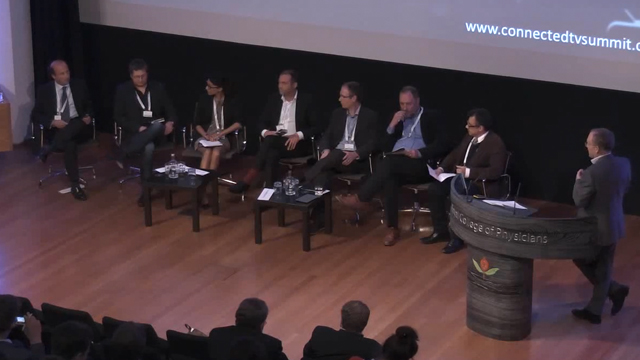The closing panel on Day One of the Connected TV Summit, on the market for Hybrid Broadcast Broadband and its impact on TV, revealed more differences than similarities between the experiences of different free-to-air broadcasters in different territories.
But there were a few points of alignment. Both the Dutch and Spanish pubcasters found that their HbbTV services were being taken up fastest by the youngest and oldest segments of the audience.

HBB Panel at the Connected TV World Summit. Click on the image to watch the entire panel discussion back
Joost Negenman, Senior Policy Adviser R&D at NPO, said that the 13-19 year-old group were the most difficult to reach, in part because HbbTV was confined to the terrestrial platform in the Netherlands. The larger distributors like cable, who by implication were more popular with this demographic, did not transmit the HbbTV signal, so this age-group “either go to apps or go to their PC or another device†to satisfy their interactive TV needs. What was required was to “make HbbTV a skin for all other devices,†he suggested.
Francisco Asensi, Business Development Director at RTVE, said the Spanish experience resembled the Dutch one. “For kids, TV has to be under their control,†he explained. “They like to watch the same content time and again, they don’t like the ad blocks, and they can pass through them [in an HbbTV on-demand environment].â€
Meanwhile, the red-button environment used by HbbTV was familiar to an older age-group who favoured linear TV. “The understand it: they just push the red button, and it works seamlessly,†he said. “They prefer this route to interactivity.â€
Conversely, the German commercial broadcaster ProSiebenSat.1 Digital had found that HbbTV appealed across all age-ranges, said Lars Friedrichs, its Head of Hybrid TV. Its problem was that 75% of users were male, possibly because they viewed HbbTV as a new technology product. “We have to work on the marketing side,†he said. “75% is not so good: we want it to be more like 50/50 [male/female].â€
Outside the UK, the proportion of TV sets actually linked to broadband appears to be reasonably high, judging by some of the panel’s responses.
Friedrichs said “We see 3.8m connected devices using our services via the red button.†But he confessed that it was not entirely clear how many connectable TVs were installed in the German market. On some estimates, the total was around 12m, he said, which would mean around 30% were activated. However, “some manufacturers say the proportion is 60%â€, although he thought this figure might only apply to more recent connected TV models, which were easier to set up.
Friedrichs noted that about 50-60% of all views to ProSiebenSat.1’s Maxdome pay-VOD portal were now via connected TV sets, as against around 20% a year ago.
RTVE’s Asensi said estimates for Spain indicated there were over 2m activated connected TV sets there, which would suggest 50-60% of HbbTV-compliant units were connected to broadband.
David Cutts, Managing Director of S&T, which partners Simplestream in a joint venture called Synapse TV that helps content owners deliver IP content into UK Freeview HD receivers, said the issue in the UK was that “smart TVs were not being sold as a connected deviceâ€â€“ mainly due to a lack of IP connections in retail outlets. Besides promoting connectivity at retail, the key to higher take-up of hybrid functionality was to make the navigation easy and in line with what viewers were used to (viz. accessible via the red button).
For this reason, Cutts said, he did not believe that connection through smart TV ‘apps’ was an appropriate model.
An Analysys Mason survey conducted in five countries in Europe and the USA and published after the Connected TV Summit found that of the one in five respondents who claimed to own a smart TV, fewer than half of those had actually connected it to the Internet.
Watch the HBB panel discussion from the Connected TV Summit back








































